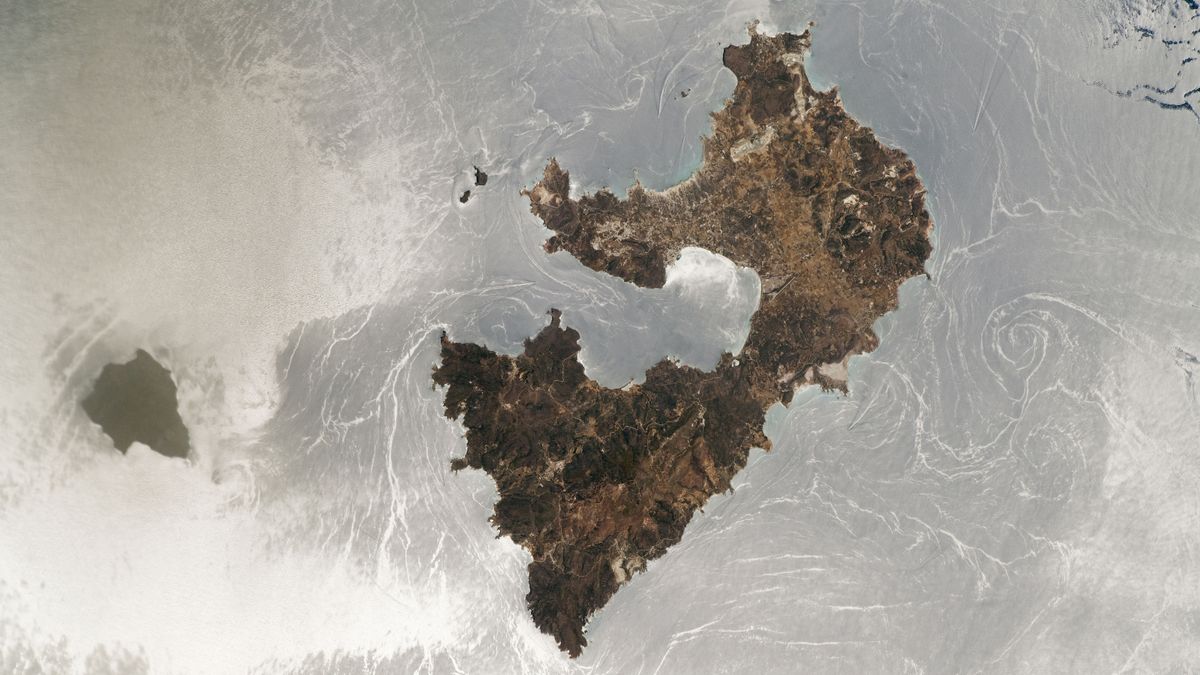QUICK FACTS
Where is it? Milos and Antimilos, Greece [36.78052336, 24.355555146]
What’s in the photo? The sun shining directly off the surface of the Mediterranean Sea
Who took the photo? An unnamed astronaut onboard the International Space Station (ISS)
When was it taken? June 25, 2022
In this stunning astronaut photo, a rare “sunglint” transforms the Mediterranean Sea’s surface into a swirling, silver mirror surrounding a pair of Greek islands — Milos (center) and Antimilos (left).
A sunglint occurs when sunlight reflects off a flat body of water directly toward an observer orbiting Earth, such as a satellite or astronaut. It is similar to how light reflects off the sea during sunrise or sunset. But instead of a bright-orange streak reflected off the waves, it looks like a massive, silvery patch that can cover several hundred square miles. From space, sunglints appear to move across the ocean as Earth rotates.
Wind-driven surface currents, deeper ocean currents, spinning gyres and other oceanographic phenomena cause the wavy lines and swirls that cut across the sea’s silver surface in the image, according to NASA’s Earth Observatory.
Most of these features would normally be invisible from space. But because they scatter some of the sun’s light, they become visible during a sunglint.
Related: See all the best images of Earth from space
One of the most striking oceanographic features in the photo is a gyre spinning like a giant whirlpool to the east (right) of Milos. Another noteworthy feature is the long, straight line in the bottom left of the picture, which is most likely the wake from a ship, according to the Earth Observatory.
However, the rarest phenomenon in the image is a set of parallel lines located just off the northwest coast (top left) of Antimilos. These lines, which are partly obscured by clouds, are “internal waves” — massive vertical waves that pass through the water beneath the surface, according to the Earth Observatory.
Unlike surface waves, which are mainly driven by ocean currents or strong winds, internal waves are the result of gravity waves (not to be confused with gravitational waves in space-time), which pass across the interface of two fluid mediums when gravity disrupts the equilibrium between them. In this case, the waves are rippling along the submerged border between two layers of water that have been stratified by temperature and salinity and disrupted by Earth’s changing tides, according to a 2021 article in The Conversation.
While sunglints are visually stunning, they can pose problems for marine scientists who rely on color in satellite imagery to monitor the health of the ocean. As a result, researchers often have to digitally remove them from images, according to the National Oceanographic and Atmospheric Administration (NOAA).
On the other hand, scientists can use sunglints to more accurately measure oil spills on the ocean’s surface, because petroleum absorbs sunlight rather than reflecting it into space, according to NOAA.















